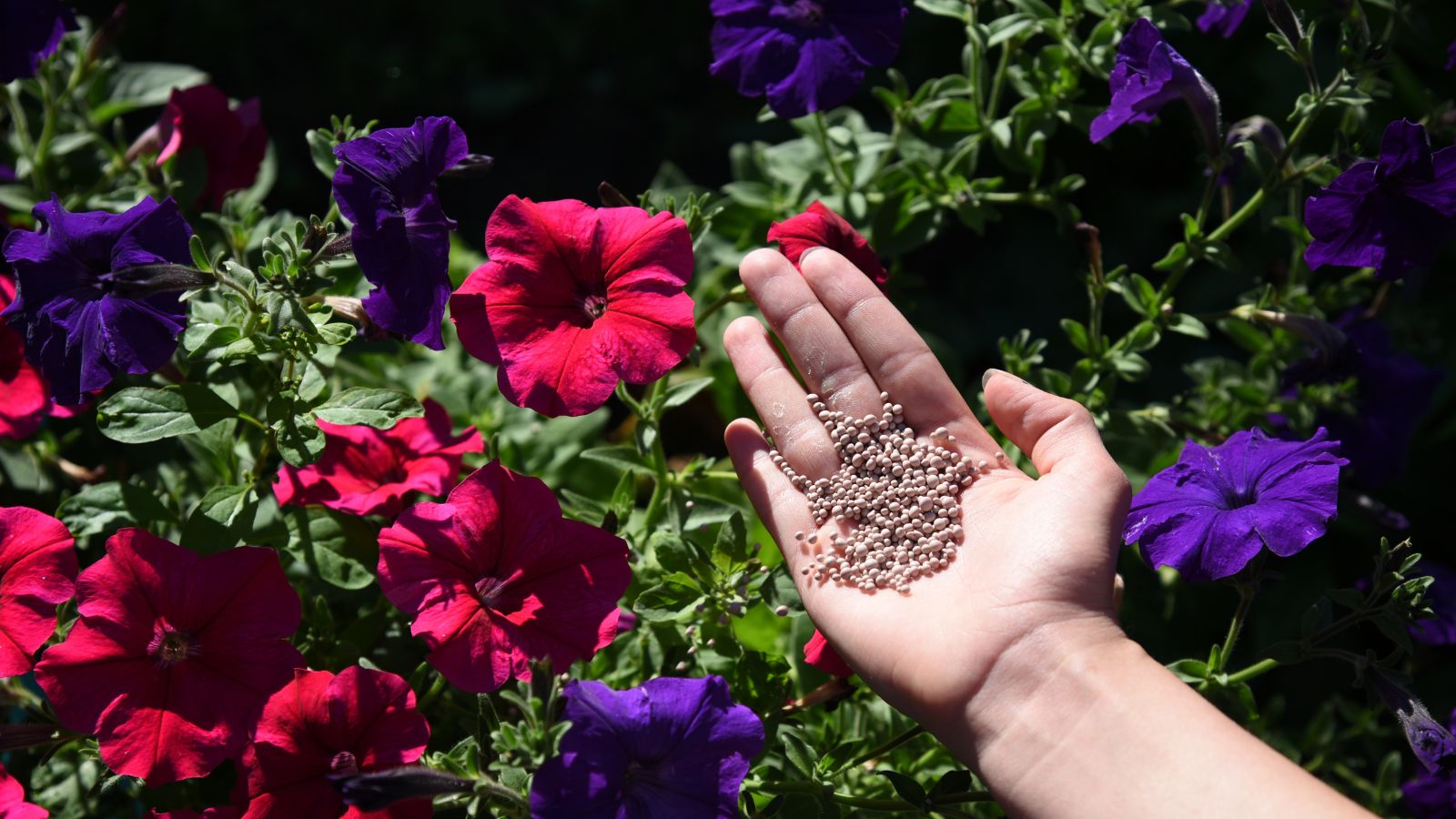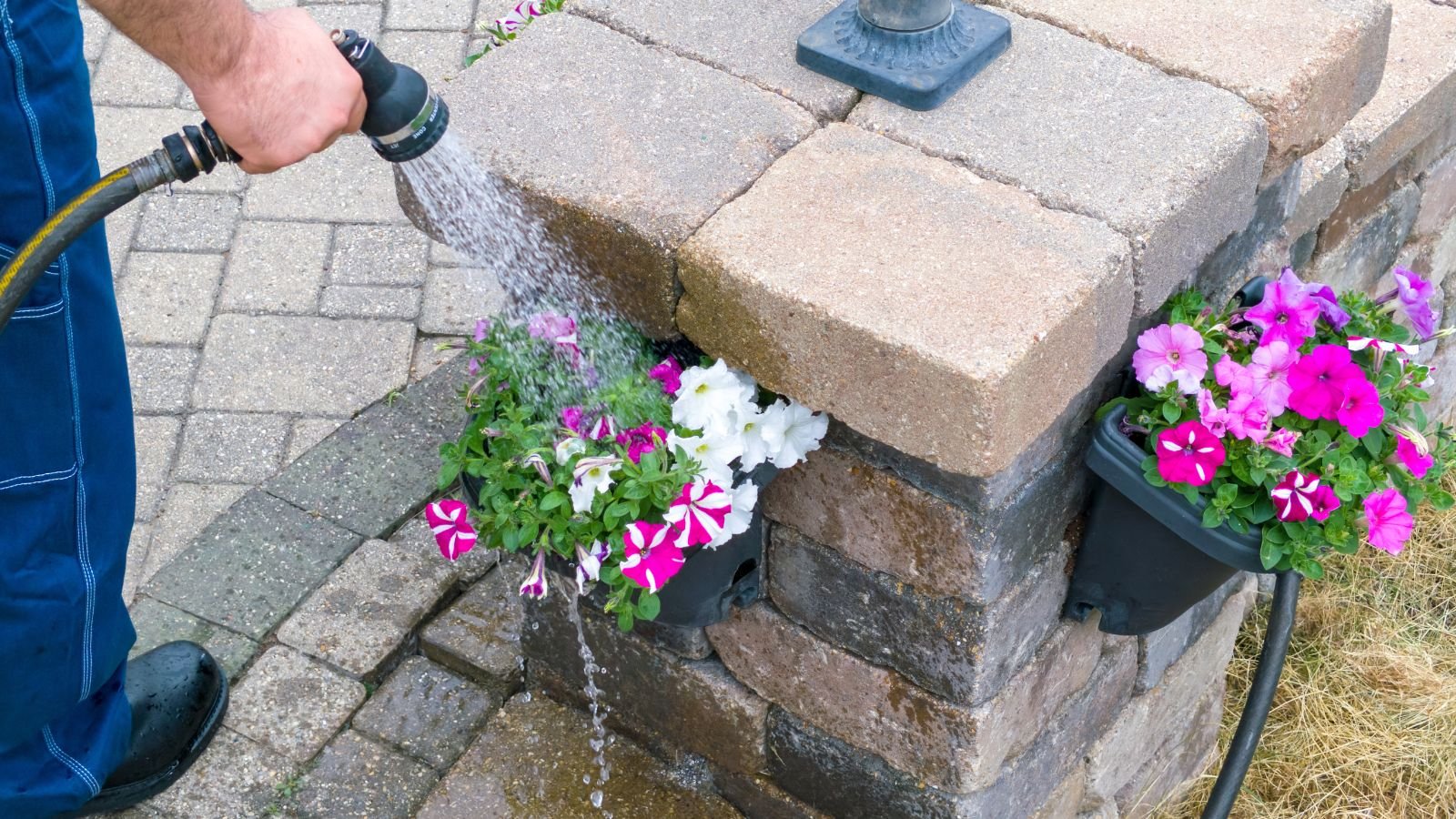PROTECT YOUR DNA WITH QUANTUM TECHNOLOGY
Orgo-Life the new way to the future Advertising by AdpathwayPetunias, with their cascading, bloom-lined stems, are among the most popular summer annuals for good reasons. They quickly fill hanging baskets, containers, and borders with cascading stems full of trumpet flowers. Long-blooming, they flower until chilly temperatures arrive in fall.
It’s normal for petunias to stall when conditions veer outside their optimal growing requirements. With adjustments and as conditions moderate, they’ll return to their full-flowering glory. If your petunia stopped blooming, try adjusting key cultural conditions to revive it.
Not Enough (or Too Much) Sun
 Most varieties need full sunlight to bloom at their highest potential.
Most varieties need full sunlight to bloom at their highest potential.Sun-loving petunias grow and flower best with at least six hours of sunlight daily. The plants tolerate partial shade, with four hours or more daily, and especially appreciate afternoon protection in hot climates. But too much shade leads to fewer or no flowers.
Petunias are fast-developing annuals that require a lot of energy to keep up the profusion of blooms. The more sun, the better for petunias growing in mild summer climates. In areas with intense afternoon sun, aim for ample morning sun exposure.
If your petunia in a hanging basket or pot isn’t blooming, move it to a sunnier location. Prune surrounding plants that overshadow bed plantings, opening them to more sunlight.
Water Fluctuations
 Avoid long periods of drought followed by heavy waterings.
Avoid long periods of drought followed by heavy waterings.Petunias do best with evenly moist, well-draining soils, though they don’t mind drying slightly between waterings. While they weather short dry spells once established, the heaviest flowering appears with consistent moisture.
Soils and pots with good drainage are essential for root health, as overwatering the annuals leads to pests and diseases. Watering fluctuations stress the plants, and as they survive the extremes, they become more susceptible to pests and diseases, in addition to a pause in producing new growth and buds.
Underwatering leads to energy conservation and a halt in growth. When there is a lack of available moisture, underwatered plants enter conservation mode. Leaves tighten, and blooming stops. To survive, petunias stop growing and reproducing (flowering).
To restore blooming, water deeply and start a regular regime. Water the soil when it is dry to one inch deep (about one knuckle deep). If the soil feels wet and sticky, hold off on irrigation.
Check containers and hanging baskets often, as they dry out more quickly than in-ground plantings, especially in the summer heat. Depending on seasonal conditions and the pot size, they may need water daily.
High Heat
 Petunias stop blooming when temperatures are regularly above 80-90°F.
Petunias stop blooming when temperatures are regularly above 80-90°F.While petunias need warm weather to thrive, they have a threshold where blooming stalls in hot conditions. Ideal temperatures for the nightshades are around 55 to 80°F (13-27°C). A run of high temperatures results in fewer flowers.
With temperatures in the upper 80s and 90s (between 27-37°C), leafy stems may show all summer with little flowering. In hot climates, opt for a heat-tolerant variety like ‘Supertunia®’ or ‘Easy Wave®.’ Newer cultivars boast improved heat and humidity resistance. Partial shade in the afternoon offers a cooling reprieve.
Cold spring or fall temperatures also contribute to petunias that stop blooming. Frost-sensitive, they don’t withstand cold conditions. Late spring frosts, chilly nights, or early fall cold snaps inhibit bud set and damage petals. Growth slows significantly when nighttime temperatures fall below 40°F (4°C).
Needs Nutrition
 Balanced organic fertilizer is ideal.
Balanced organic fertilizer is ideal.To do all their growing, flowering, and seeding in a single season, petunias are heavy feeders. They need plenty of nutrients to complete their life cycle. If your petunia is not blooming, it may be due to a lack of supplemental nutrition. But, too much fertilizer also causes growing issues.
A balanced organic fertilizer like 8-8-8 at planting gives a boost. A granular slow-release works well to distribute nutrition gradually over a couple of months. A standard granular lasts about a month, and a liquid feed lasts for two to three weeks (based on application directions).
If flower production is slow but other growing conditions are on track (sunlight, moisture, temperature), a liquid feed offers quick resources. The annuals benefit from applications starting in June (every few weeks) and increasing in July to every two weeks. Use a formula specific to flowering plants.
Higher phosphorus (P) is more beneficial than high nitrogen (N) in the NPK ratio in boosting blooms. Too much nitrogen leads to leafy stem production but limits budding.
Time for a Trim
 These flowers benefit from pruning off up to 20% of the stems.
These flowers benefit from pruning off up to 20% of the stems.Petunias benefit from pruning to keep a leafy, vigorous habit. The spreading, sprawling stems become leggy as summer wears on. If your petunias stopped blooming in the summer heat, give them a refresh with a trim in midsummer. Repeat the cutback in late summer to prolong the season.
Clipping the stems promotes new growth and flowering. Cut stems by as much as 20%. You’ll forfeit a week or so of flowers, but restoring fresh leaves and buds is worth it to prolong the blooms.
Alternatively, clip individual stems intermittently to retain some flowers while pruning others. After cutting back, apply a liquid feed to spur new growth.
Deadheading
 Prevent plants from going to seed and encourage more flowers.
Prevent plants from going to seed and encourage more flowers.Some petunias, like old-fashioned grandiflora varieties with large or double blooms, benefit from deadheading. Deadheading faded blooms prevents the plants from going to seed.
It channels their energy into flower production instead. Deadheading also keeps the large blossoms from dropping and resting on leaves, creating conditions ripe for fungal diseases.
Many petunias, including smaller-flowered and newer cultivars, are self-cleaning and don’t require deadheading for continual flowering.
Pest Problems
 A blast of water can help deal with many pests.
A blast of water can help deal with many pests.After checking for cultural adjustments, it’s time to scout for pests and diseases in a petunia that’s not blooming. The annuals are mostly problem-free, but common garden pests can cause damage. Detecting pests early prevents them from depleting resources and also transmitting diseases.
Sap-sucking insects like spider mites, aphids, and thrips feed on leaves and cellular tissue. They cause yellowing leaves and premature dropping. Beneficial predatory insects like ladybugs and predatory mites help control populations.
If you detect insect infestation, spray the plant with a strong stream of water early in the day to deter and knock insects off the stems. A simple horticultural soap or oil, like neem, rids the plant of severe cases. Be sure to follow label directions, as these treatments affect pollinators.
Slugs and snails, too, have a penchant for soft new growth and tender petals. Handpick them off leaves and stems in the evening hours – they’re most active then. For large numbers, beer, soda traps, and diatomaceous earth may limit the creatures.
Diseases
 Fungal diseases appear in humid, stressed, or overwatered conditions.
Fungal diseases appear in humid, stressed, or overwatered conditions.Common fungal diseases crop up for the annuals as cultural practices harbor spores and promote their spread. A disease-stressed plant will drop blooms or fail to produce them.
Root and crown rot, botrytis, and powdery mildew are among the most common reasons that a petunia may randomly stop blooming. To prevent these from developing, water consistently for even moisture. Avoid wetting the leaves unnecessarily to limit humid, damp conditions and the spread of spores through splashing.
Ensure good air circulation around leaves and stems. Remove damaged leaves as they take on disease. Horticultural oils can limit the spread of diseases to healthy plant tissue.
Verticillium wilt and viruses, like tobacco mosaic virus, cause a quick decline. There’s no treatment for these, and removal is the best course of action to prevent the spread to other specimens.


 5 days ago
7
5 days ago
7





















 English (US) ·
English (US) ·  French (CA) ·
French (CA) ·